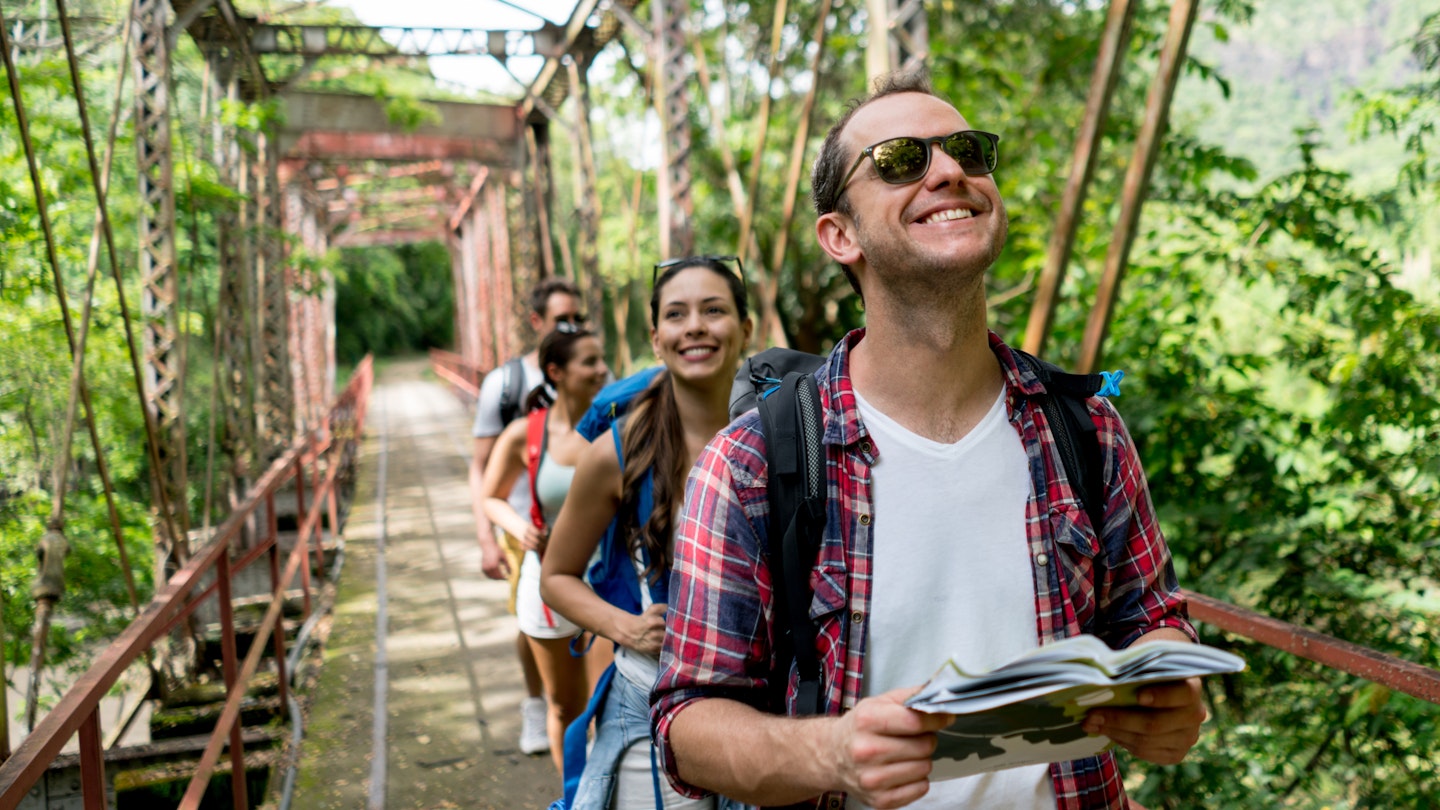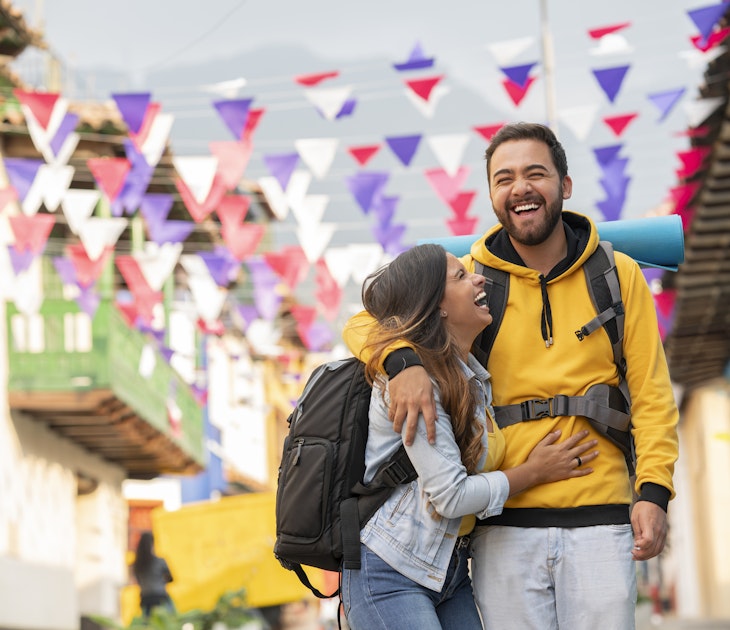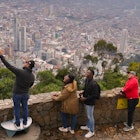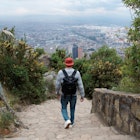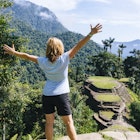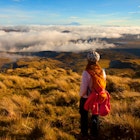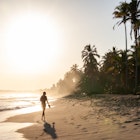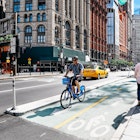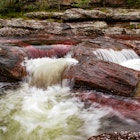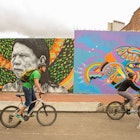With its cobbled historic downtown, fascinating museums and lively dining and bar scene, Bogotá can keep you busy for days. After you’ve made the most of the city’s cultural and historical experiences, consider a day trip to Bogotá’s lush and evergreen hinterland, where you’ll find misty cloud forests, quaint towns, striking mountains and lots of outdoor activities. Most of these places can be reached on a bus, but if you rent a car, you might be able to combine a few of them into a one – or two – day trip.
Here are the best short escapes from Bogotá.
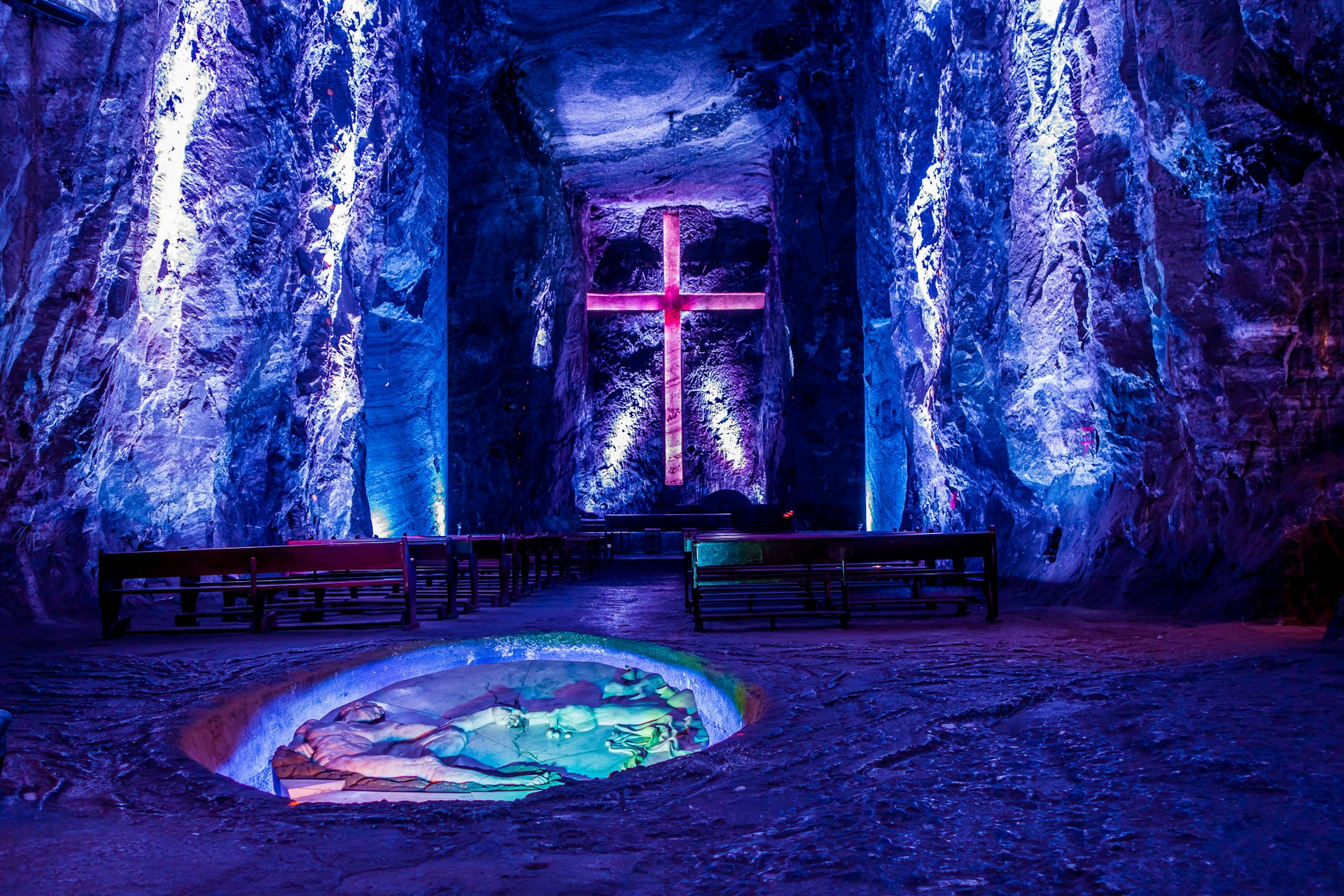
1. Visit Zipaquirá and explore a salt mine that’s so big it has its own cathedral
Travel time: 1 hour 30 mins
Zipaquirá is home to one of Colombia’s architectural wonders: a cathedral built in one of the chambers of its massive salt mine, 90m (295ft) underground.
It is an imposing site, which will also give you a chance to learn about the history of salt mining – and why a church was built here in the first place – as you follow a guided tour that snakes down the mine’s corridors. At the bottom, there are coffee shops, a spa and additional activities, such as a tour where you can swing a pickaxe at the walls to “mine” your own salt.
Also, make sure not to miss Zipaquirá’s picturesque historical center, which is packed with restaurants and coffee shops in its colonial-era streets. Try local craft beers at the Pie de Cumbre Pub, or stop by Labriego for a modern take on Colombian food.
How to get to Zipaquirá from Bogotá: Hop on the city’s rapid bus system, the Transmilenio, and get off at the Portal del Norte Station. From there, you can take an intermunicipal bus to Zipaquirá and then a taxi to the salt mine, which is on a hill above the town. On weekends, a tourist train is also available, leaving from the Usaquen station on Avenida 9 with Calle 110. Check out the turistren website for schedules and ticket prices.

2. Get sprayed by Colombia’s tallest waterfall at Parque La Chorrera
Travel time: 1 hour 30 mins
One of Colombia’s best hikes is in La Chorrera Park, a community-run nature reserve that houses a spectacular waterfall with a 590m (1900ft) drop. Getting to the base of the waterfall is half of the fun and involves trekking through bright green farmland and a misty cloud forest with a detour that will take you past a smaller waterfall.
The entire circuit takes about three hours to complete and is best done on weekdays when there are fewer visitors from Bogotá. You can also combine the La Chorrera trek with a visit to nearby Choachi, which has two hot springs and a 50-year-old Swiss restaurant that serves hearty fare. For further relaxation, spend the night at one of the glamping sites in the mountains around Choachi.
How to get to La Chorrera from Bogotá: Take a bus to Choachi from Transoriente, located on Calle 6 with Carrera 15, or from Transfomeque, which is on the same block. Tell the bus driver to drop you off at the entrance to La Chorrera, which is on Km 27. From there, it's 4km (2.5 miles) along an unpaved road to the park entrance. You can take a mototaxi – or walk.
3. Contemplate a sacred Muisca site at Laguna de Guatavita
Travel time: 2 hours
Located at 3100m (10,170ft) above sea level and surrounded by steep cliffs, Guatavita Lake is quite a mesmerizing sight to behold. The dark green lake was sacred to the Muisca people, who would hold a special ceremony there when a new chieftain, or cacique, was inaugurated.
According to 16th-century chronicles, the new cacique would get on a raft with his priests, his body covered in gold dust. When the raft approached the center of the lake, he would jump into the chilly water while his subjects watched from the shore and also dumped offerings of gold statuettes into the lake.
You can now climb to the cliffs above the lake and walk along a trail with panoramic views, while a park guide fills you in on the historical details. On your way back to Bogotá, stop at the picturesque town of Guatavita or visit “La Casa Loca,” an upside-down house recently built by an Austrian expat, where you can take mind-bending photos inside the colorful rooms.
How to get to Guatavita Lake from Bogotá: From the Terminal del Norte bus station, take a bus towards Guatavita town, which is 12km (7.5 miles) away from the lake’s entrance. Ask the bus driver to drop you off at the turnoff to the lake, and from here, it’s a 7km (4.3 mile) walk to the entrance. There are vans that go to the lake at 11am and 1pm on weekdays and more frequently on weekends. Alternatively, you can get a taxi. To make the most of your day and visit surrounding sites, it may be worth renting a car.
4. Walk up to the chilling edge of a cliff at Piedra Colgada and take a photo you will never forget
Travel time: 2 hours
Piedra Colgada, or “the hanging rock,” is a rock shaped like a turtle’s head that sticks out from a massive cliff near the town of Susa.
Using a safety harness, you can walk up to the rock's edge and look down at the chilling 600m (1968ft) drop, or gaze at the fields that carpet the valley below, taking in the multiple shades of green. The rock is located within a small nature reserve near the town of Susa that provides several stunning viewpoints. On the way back to Bogotá, you can also visit the small town, which has a church with stone bricks and small streets lined with one-story homes.
How to get to Piedra Colgada from Bogotá: Take a bus heading to Chiquinquirá at the Terminal del Norte bus station and ask the driver to drop you off at Susa. Alternatively, take an intermunicipal bus to Ubaté, where you can switch to another bus headed for Susa.
In Susa’s main square, you can hire a tuk-tuk to take you to the Piedra Colgada park, which is about 10km (6 miles) away on an unpaved road. You can also hike to the park entrance along a trail that crosses cloud forests and potato farms, but it is best to go with a local guide. Agencies in Bogotá also organize trips to the park.

5. Hike through the unique vegetation of the páramos and try to spot spectacled bears
Travel time: 2 hours
Páramos are cold, high-altitude grasslands located above the cloud forest that store water that gathers at the top of the Andes mountains. They are inhabited by small birds, deer and spectacled bears, and are dotted with hundreds of surreal-looking plants known as frailejones, which have broad, thick leaves that are covered by soft white “hairs.”
Take a walk through one of the páramos that surround Bogotá and get to see this unique ecosystem for yourself. Some good places to visit the páramos include the Sumapaz district to the south of Bogotá or the Chingaza National Park to the east of the city. Although bears are hard to spot, they are most frequently sighted at the Chingaza Park, where a trail also takes visitors past a couple of scenic lakes.
Tour agencies in Bogotá organize day treks to the páramos that include transportation and guides, but you will often have to take your own lunch. Agencies organizing hikes through the páramos include Road Trip Travel, Andes Ecotours and Ecoglobal Expeditions.
How to get to the páramos: You can rent a car in Bogotá and drive to the main entrance of Chingaza Park at Piedras Gordas, where information on trails and roads through the park is available. It’s a challenging drive as the road is narrow and curvy, and parts of it are unpaved. You will need to book ahead on the park’s website or by calling its offices.

6. Test your climbing skills and take in the sweeping views at Suesca
Travel time: 1 hour 30 mins
The quaint town of Suesca is located next to a 2km-long (1.25-mile) cliff that reaches altitudes of up to 130m (426ft) and has been a favorite spot for rock climbers in Colombia for decades.
You can hire a guide and rent gear at one of the local agencies, then tackle one of dozens of routes with varying degrees of difficulty. If rock climbing is not your thing, you can reach the top of the cliff anyways by walking along a fun and easy 12km-long (7.5-mile) trail, enjoying splendid views of the green savannah below.
Agencies in town also rent horses and mountain bikes to do the trip. There’s also a campsite near the famous rocks, as well as several glamping options.
How to get to Suesca from Bogotá: Take a bus from the Terminal del Norte bus station. The rock climbing area is a 15-minute walk from the center of town.
7. Enjoy a Colombian theme park experience at Parque Jaime Duque
Travel time: 1 hour 30 mins
This large theme park near the town of Cajicá was built in the early 1980s by an airline pilot who wanted to bring “a world of experiences'' to relatively isolated Colombia. The result is a curious mix of attractions that include a life-size replica of the Taj Majal, a “medieval castle” and a ship used by the US Navy in WWII, and later sold to Colombia.
There are also slides, bumper cars and trampolines for kids, and a zoo with dozens of species, including flamingoes, spectacled bears and a tapir from the Amazon. The park’s hippo is a descendant of three hippos brought to the country in the 1980s by Pablo Escobar for his ranch, which had a private zoo that was eventually confiscated by the government, along with the rest of the drug dealer’s properties.
How to get to Parque Jaime Duque from Bogotá: Take a bus at the Terminal del Norte bus station to Tocancipá and get off at a roundabout in front of the park’s entrance.
8. Pamper yourself and enjoy warmer weather at one of San Francisco’s glamping spots
With temperatures ranging from 16℃ to 24℃ (60℉ to 75℉), San Francisco is becoming an increasingly popular getaway for Bogotános seeking a laid-back weekend with warmer temperatures. The lush valley surrounding the town is now dotted with properties that have been turned into glamping sites, where you can relax in wood cabins, tree houses or glass domes that enable you to view the stars at night.
Some spots to consider include Yuva Glamping, Luna Glamping and Terra Maga, which is built next to a soothing river and has its own spa and trails that lead into the rainforest. In San Francisco town, check out the hummingbird sanctuary – El Jardin Encantado – where you can get up close to a surprising variety of these birds.
How to get to San Francisco from Bogotá: Take a bus from the Terminal Salitre station, where Flota Santa Fe runs regular departures. Glamping sites in the area can also arrange transport from the town’s main square.
9. Explore the cloud forest and go ziplining at Chicaque Park
Travel time: 1 hour 30 mins
This privately owned nature reserve, covering 300 hectares of pristine cloud forest, has activities to keep you busy for a couple of days. You can go ziplining along the forest canopy, or climb a 32m-tall (104ft) tree using a ladder and a rope. If you prefer to stay on the ground, you can book a birdwatching tour or hike along one of the park's seven trails, including a path that passes through an oak forest. It’s easy to stay for a night or two. The park has its own accommodations, which include a hostel, wood cabins, a campsite and tree houses known as “nests.”
How to get to Chicaque Park from Bogotá: The park runs a shuttle on the weekends that leaves every hour in the mornings from the Terreros Transmilenio station in the south of Bogotá. On weekdays, it's best to hire a driver or take a taxi. The park is 15km (9.3 miles) from the Terreros station.

